Poplin: description, composition and care rules

On the modern market, a huge number of different types of fabrics are offered so that the consumer can choose what he wants, focusing on his own tastes and preferences, but not all are made from safe and high-quality ingredients. Among the popular canvases, poplin can be noted, it is made from natural cotton, sometimes with an admixture of synthetics, and has a large number of positive reviews from buyers all over the world. Plain weaving is used in production, which makes the fabric look like chintz or calico. What kind of material it is, how to choose it correctly, and what subtleties to pay attention to when leaving, we will talk in our article.


What it is?
A fabric such as poplin has been known and deservedly popular since ancient times. Clothes, bedding and many other things are sewn from it. The material received such widespread use due to the fact that it is very pleasant to the touch, soft and at the same time has an attractive appearance.
From the Italian language, the name of this small ribbed fabric is translated as "papal", and there is an explanation for this. Since ancient times, rich and beautiful clothes for the Pope himself were made from this material.
In our country, poplin became famous in the 18th century and almost immediately gained popularity among its inhabitants., because from it not only beautiful and high-quality, but also affordable things are obtained. In the Russian language, the name of this fabric in a small scar is translated as "papal", and there is an explanation for this.


The description of the fabric should begin with the manufacturing process. It is a plain weave, however, fibers of different calibers are used for it. The basis of the fabric is made of rather thin threads, while the transverse weaving, the so-called weft threads, is at least one and a half times thicker and no longer so smooth. It is this kind of weaving that provides the very unobtrusive scar relief. Currently, poplin is used mainly for the production of bedding, but other things made from it are in no less demand.
Due to the fact that both natural and synthetic threads are involved in the manufacture of poplin, an eye-catching matte sheen appears on the canvas. Many people compare this material with calico, but this is not entirely correct. Poplin is lighter and feels much softer on contact with skin.

Main characteristics
Poplin is currently produced on a cotton basis. In some cases, silk threads are added during the manufacturing process. To make the canvas more durable, it can be diluted with synthetic components. This material is in the middle price category, but there are also quite expensive varieties. These are fabrics made in countries such as China, Turkey and India. Their difference is that only natural cotton raw materials are used for production, respectively, the strength, density and wear resistance of products are at a fairly high level.
In terms of basic characteristics, this finely ribbed fabric has excellent density. It can be of two types: the density of the weave of the fibers and the strength of the surface. This is the defining moment in confirming the quality of the products. Despite the high level of this indicator, the material remains soft and pleasant to the touch, passes moisture and air well, therefore, clothes made from such fabrics are in high demand in the market.


Another distinctive feature is that the poplin almost does not wrinkle, therefore, there is no need for constant ironing of the fabric.
This became possible due to the relief structure of the material and the transverse ribs on it. At the same time, the canvases are unpretentious, they can be safely washed if necessary, without fear of loss of color and without using any special detergents. The material is absolutely inert.
As for the similarities between poplin and coarse calico, there are several significant differences. Calico is a kind of cotton fabrics, while poplin can be more attributed to natural silk fabrics. In addition, poplin is not as strong and has a lower density. On its surface, a relief pattern is clearly distinguished, while the coarse calico is quite even and smooth.


Poplin varieties
Poplin is quite popular and is often used in modern society. Moreover, he has several varieties. First of all, the material can be divided according to its composition and type of staining.
By composition
The basic division takes place according to the composition of the canvases. The main types are cotton fabrics, silk and synthetic. Mostly the material consists of cotton, however, wool, silk, synthetics and viscose may be present along with it.
Most often, manufacturers add synthetics, but their amount is very small. Materials containing woolen or silk fibers appear on store shelves much less often. Grodesin is an expensive type of poplin made in India.

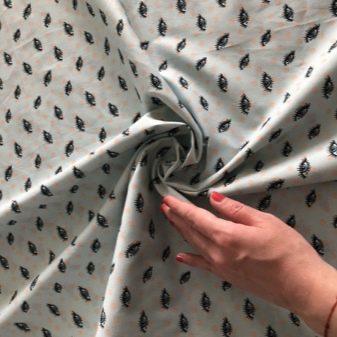
By type of staining
According to the type of coloring, poplin can be divided into bleached, printed, one-colored, multi-colored. Let's consider each of the types in more detail.
The bleached material is produced, as the name suggests, by bleaching the fabric. Initially, the canvases have a shade of yellow or dirty gray, which visually does not look very beautiful. The material undergoes chemical treatment, as a result of which unwanted shades are eliminated.As a result, an even white color is obtained, on which in the future you can apply various patterns or use it in its original form.
Printed poplin is also called printed. Today, manufacturers have the opportunity to apply designs using modern specialized printing machines, resulting in clear and most vivid ornaments and patterns. The material is very soft and smooth to the touch. How long the dye will last on the fabric without changing its color depends solely on the quality of the composition.
If it is good enough, the material will be absolutely safe, it will not wash off and fade in the sun.
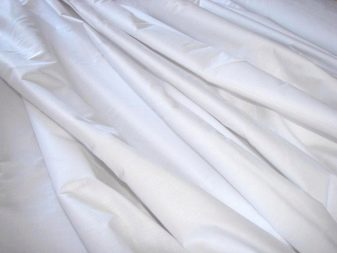

In production, direct, etched and back-up printing can be applied. In the first case, the paint is immediately applied to the canvas. Depending on the manufacturer, the color composition can be additionally fixed with a special film, this helps to keep the color longer, however, the fabric itself becomes coarser and already less breathable.
Etching is applied to a pre-dyed plain fabric. The dye is removed in a special way on the necessary areas of the material, this leads to the formation of an ornament.
As for the backup printing, in this case, a special reserve composition is applied to the fabric in the necessary areas, which prevents the ingress of dye. Next, painting is done, and after the material has dried, the composition is removed from it.


Plain dyed poplin is obtained by applying any desired tones to a pre-bleached fabric. The manipulation is carried out using coloring drums and lasts for 10 hours. After that, the canvas must be washed, which will help remove excess dye composition. In the future, the fabric will delight its owners with the brightness and saturation of colors, while remaining resistant to fading.
Multicolored poplin is obtained when threads that have been dyed in a certain color are intertwined. The dye is applied to the fibers in the same way as described in the previous method. The dyeing procedure itself is as follows: first, there is adsorption - this is when the threads absorb the dye, then diffusion - the penetration of the composition into the fibers, and, finally, fixation - fixing the coloring pigment in the material.


Advantages and disadvantages
Studying information about this or that material, one cannot omit the moment about its advantages and disadvantages. Many consumers speak positively about poplin because it has a number of benefits. This is, for example, an attractive appearance and a beautiful shine. In addition, it should be said that the fabric practically does not fade, it is resistant to sunlight, is not afraid of high temperatures and other unfavorable environmental factors.
The wear resistance of poplin is very high, while the fabric remains light and very soft, does not obstruct the passage of air. These canvases are absolutely safe, things made from them are suitable even for small children and newborns.
The composition contains mostly natural fibers, so high-quality material cannot cause allergic reactions.


And also the undoubted advantage is the unpretentiousness of poplin. It is not necessary to iron it at all, especially when it comes to bedding, you can wash it without fear of fading and loss of shape of things. At the same time, the price remains at an affordable level.
Despite the fact that the use of such fabric causes mostly positive emotions among consumers, some note its disadvantages. They are not too significant, however, when buying material, they must be taken into account. We are talking about such moments as the possibility of slight shrinkage of the fabric if it contains wool. And there may also be some difficulties in the sewing process.The material has ribs that can complicate the cutting process, so it is better to turn to a professional craftsman for individual orders.

What do they sew from poplin?
Having learned about all the advantages of the material called "poplin", consumers first of all ask themselves the question - what things can be sewn from such a versatile and comfortable fabric. As practice shows, it is possible to list the assortment for a very long time. The linens are suitable not only for making bed linen, but also for various products that can be used by both children and adults.
Poplin products are in great demand in the market. The attention of consumers is offered women's clothing, men's shirts, sportswear, pajamas, children's assortment, overalls. All items are perfect to be worn every day. In addition, all kinds of towels, tablecloths and curtains are made from the material. It is actively used to create designer toys and souvenirs.
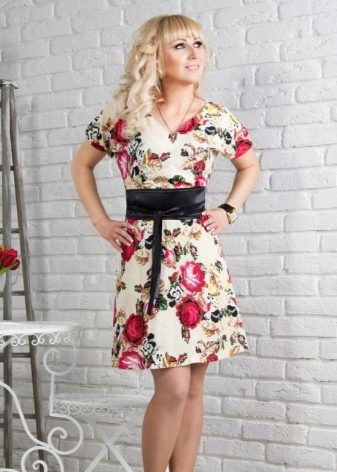
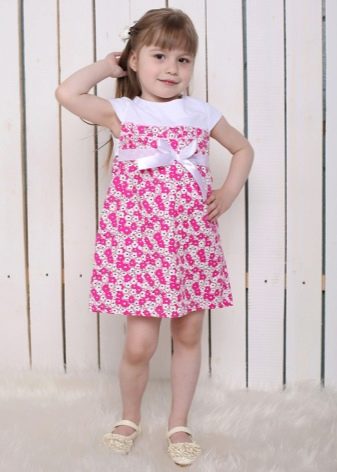
As for bedding, many consumers prefer to purchase it exclusively from this fabric. And this is not surprising, because poplin products have many advantages. The linen is quite durable and can serve its owner for a long time, it is pleasant to touch it, it keeps its shape perfectly and retains its color even with constant use. And also pillowcases, duvet covers and sheets absorb moisture well, allow air to pass through, while retaining heat.
Minimal maintenance is required, linen need not even be ironed; timely washing in a washing machine will be enough.


How to care for the fabric?
In order for the fabric to serve for a long time, it is necessary to properly care for it. In the case of poplin, the process is not difficult, since the material is quite unpretentious. However, it should be borne in mind that certain subtleties are primarily affected by the composition of the material, therefore, before doing anything with it, you need to pay attention to the label.
This is especially true for the washing of products. Some unpleasant things can happen here, since things containing artificial materials and synthetics do not tolerate hot water, and its temperature during washing should not exceed 40 degrees. Spinning, drying and ironing should also be done more gently.
With natural materials, there are usually no problems. They can be easily machine washed in the selected modes, wrung out and ironed without difficulty.
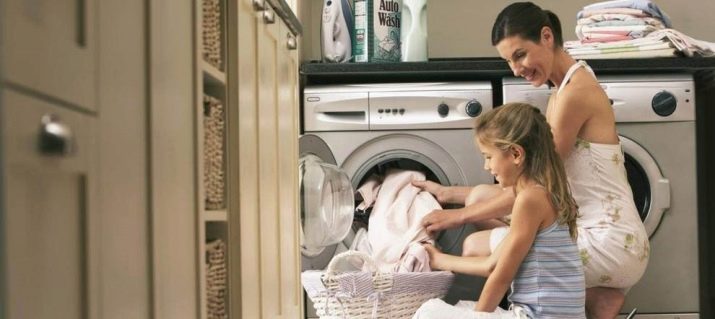
Selection Tips
A large number of people make a choice in favor of things from poplin. However, there are those who prefer to first compare it with other materials in order to decide for themselves which is better. One of the similar fabrics is ranforce. It is a little denser, but this is reflected in the price. Consider what to look for for those who nevertheless decided to choose products from poplin.
First of all, it is necessary to assess the quality of the material from which this or that thing is made. The principle of tailoring also plays an important role. If the products have uneven, untreated seams, it is better to refuse to purchase. But it is also worth paying attention to the products of well-known manufacturing companies, in this case there are more chances to purchase high-quality material.


You can make sure whether it's real poplin on the counter or not, as follows: a piece of fabric is carefully crumpled in your hand. The original material will quickly unfold and return to its original shape.
Sometimes, with poor-quality manufacturing, problems may arise regarding the dyeing of the fabric. Persistent colorants do not wash out on contact with water and do not remain on the skin. The danger of low-quality materials is that they can provoke allergic reactions.
Good paint is distinguished by its vividness of color and sharpness of lines.


Reviews
Most consumer reviews of poplin use are positive.Users point out that the material meets the declared characteristics, has a fairly long service life, does not wrinkle or fade. Caring for him is not difficult at all, which is especially suitable for busy people and practical housewives. Some people themselves prefer to buy materials of proper quality in order to sew the necessary things from them, and at the same time note the convenience of working with the fabric.
For the differences between bedding fabrics, see the following video.









Thanks for the useful and interesting article, now everything is clear to me.